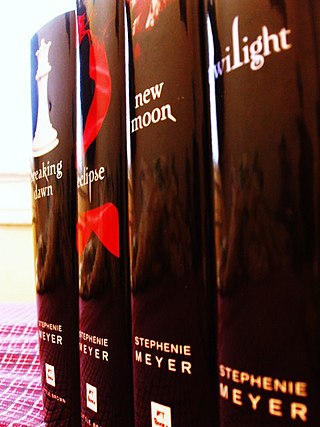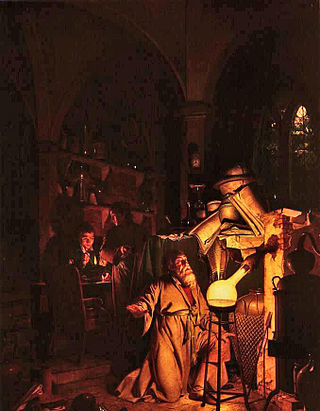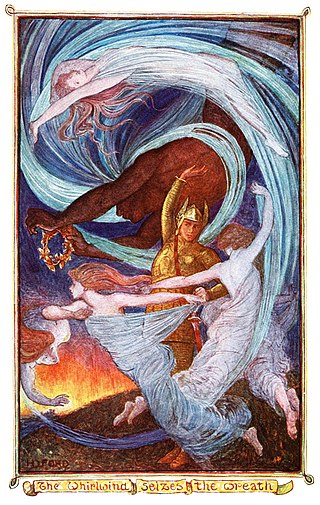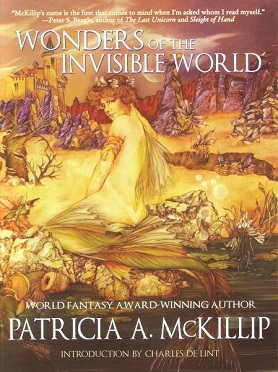
A fairy tale is a short story that belongs to the folklore genre. Such stories typically feature magic, enchantments, and mythical or fanciful beings. In most cultures, there is no clear line separating myth from folk or fairy tale; all these together form the literature of preliterate societies. Fairy tales may be distinguished from other folk narratives such as legends and explicit moral tales, including beast fables. Prevalent elements include dragons, dwarfs, elves, fairies, giants, gnomes, goblins, griffins, merfolk, monsters, monarchy, pixies, talking animals, trolls, unicorns, witches, wizards, magic, and enchantments.
Speculative fiction is an umbrella genre of fiction that encompasses all the subgenres that depart from realism, or strictly imitating everyday reality, instead presenting fantastical, supernatural, futuristic, or other imaginative realms. This catch-all genre includes, but is not limited to, science fiction, fantasy, horror, slipstream, magical realism, superhero fiction, alternate history, utopia and dystopia, fairy tales, steampunk, cyberpunk, weird fiction, and some apocalyptic and post-apocalyptic fiction. In other words, it speculates on something supposedly nonexistent within reality.

Raymond Elias Feist is an American fantasy fiction author who wrote The Riftwar Cycle, a series of novels and short stories. His books have been translated into multiple languages and have sold over 15 million copies.
Urban fantasy is a subgenre of fantasy, placing supernatural elements in a contemporary urban-affected setting. The combination provides the writer with a platform for classic fantasy tropes, quixotic plot-elements, and unusual characters—without demanding the creation of an entire imaginary world.

The Mythopoeic Awards for literature and literary studies are given annually for outstanding works in the fields of myth, fantasy, and the scholarly study of these areas. Established by the Mythopoeic Society in 1971, the Mythopoeic Fantasy Award is given for "fiction in the spirit of the Inklings", and the Scholarship Award for non-fiction work. The award is a statuette of a seated lion, with a plaque on the base. It has drawn resemblance to, and is often called, the "Aslan".

Romantic fantasy or romantasy is a subgenre of fantasy fiction combining fantasy and romance, describing a fantasy story using many of the elements and conventions of the chivalric romance genre. One of the key features of romantic fantasy involves the focus on relationships, social, political, and romantic.

Fantasy literature is literature set in an imaginary universe, often but not always without any locations, events, or people from the real world. Magic, the supernatural and magical creatures are common in many of these imaginary worlds. Fantasy literature may be directed at both children and adults.
Jack David Zipes is a literary scholar and author. He is a Professor Emeritus in the Department of German, Nordic, Slavic and Dutch at the University of Minnesota.

Terri Windling is an American editor, artist, essayist, and the author of books for both children and adults. She has won nine World Fantasy Awards, the Mythopoeic Fantasy Award, and the Bram Stoker Award, and her collection The Armless Maiden appeared on the short-list for the James Tiptree, Jr. Award.
Steve Berman is an American editor, novelist and short story writer. He writes in the field of queer speculative fiction.

Paranormal romance is a subgenre of both romantic fiction and speculative fiction. Paranormal romance focuses on romantic love and includes elements beyond the range of scientific explanation, from the speculative fiction genres of fantasy, science fiction, and horror. Paranormal romance range from traditional romances with a paranormal setting to stories with a science fiction or fantasy-based plot with a romantic subplot included. Romantic relationships between humans and vampires, shapeshifters, ghosts, and other entities of a fantastic or otherworldly nature are common.

Elements of the supernatural and the fantastic were an element of literature from its beginning. The modern fantasy genre is distinguished from tales and folklore which contain fantastic elements, first by the acknowledged fictitious nature of the work, and second by the naming of an author. Authors like George MacDonald (1824–1905) created the first explicitly fantastic works.

Elements of the supernatural and the fantastic were an element of literature from its beginning, though the idea of a distinct genre, in the modern sense, is less than two centuries old.

Elements of fantastical or supernatural fiction have been part of mainstream Russian literature since the 18th century. Russian fantasy developed from the centuries-old traditions of Slavic mythology and folklore. Russian science fiction emerged in the mid-19th century and rose to its prominence during the Soviet era, both in cinema and literature, with writers like the Strugatsky brothers, Kir Bulychov, and Mikhail Bulgakov, among others. Soviet filmmakers produced a number science fiction and fantasy films. Outside modern Russian borders, there are a significant number of Russophone writers and filmmakers from Ukraine, Belarus and Kazakhstan, who have made a notable contribution to the genres.

Fantasy is a genre of speculative fiction which involves themes of the supernatural, magic, and imaginary worlds and creatures.

The following outline is provided as an overview of and topical guide to fantasy:
This is a complete bibliography of the works by American fantasy fiction author Raymond E. Feist.

Wonders of the Invisible World is a collection of fantasy short stories by Patricia A. McKillip. It was first published in trade paperback and ebook by Tachyon Publications in October 2012. The title of both the collection and the first story in it derive from the 1693 book of the same title by Cotton Mather.

The Changeling Sea is a fantasy novel for juvenile readers by Patricia A. McKillip. It was first published in hardcover by Atheneum/Macmillan in October 1988, with a paperback edition issued by Del Rey/Ballantine in December 1989. It was subsequently reissued in paperback and ebook by Firebird/Penguin in April 2003. The first British edition was published in hardcover by Oxford University Press in September 1991, with an ebook edition following from Gateway/Orion in December 2015.














